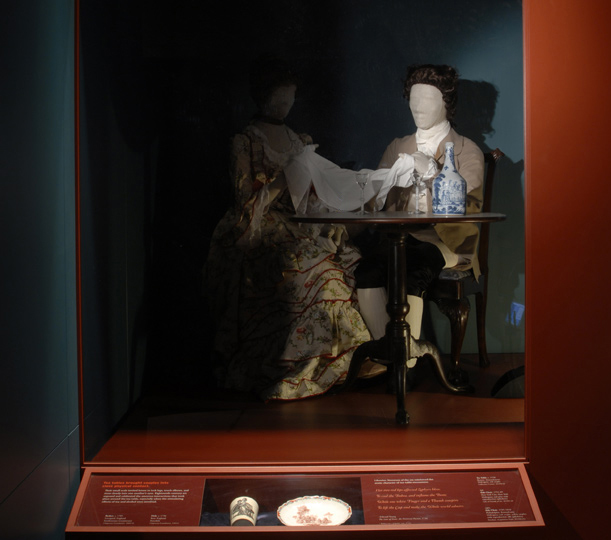Tea tables brought couples into close physical contact.
Their small scale invited lovers to lock legs, touch elbows, and stare closely into each other’s eyes. Eighteenth-century art exposed and celebrated the amorous interactions that took place around the tea table, especially when the stimulating effects of tea and alcohol were involved. Likewise, literature of the era reinforced the erotic character of tea-table encounters:
Her two red lips affected Zephyrs blow,
To cool the Bohea, and inflame the Beau;
While one white Finger and a Thumb conspire
To lift the Cup and make the Whole world admire.–Edward Young
The Love of Fame, the Universal Passion, 1720
* Bohea was a popular type of tea.
Left:
Side Chair, 1755–85
New York City, New York
Mahogany and pine with reproduction upholstery
Gift of Friends of Art M1967.28
Right:
Side Chair, 1795–1810
Philadelphia, Pennsylvania
Mahogany, soft maple, yellow poplar, with reproduction silk upholstery
Purchase, Acquisition Fund M1968.24a
